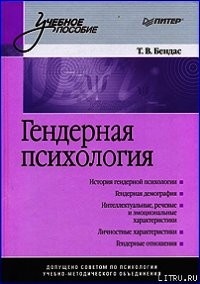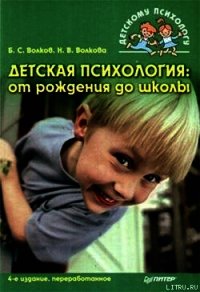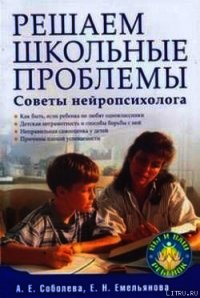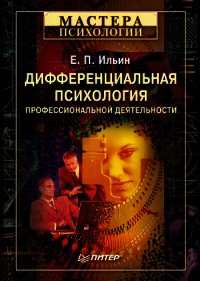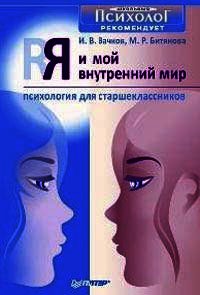Психология творчества, креативности, одаренности .. - Ильин Евгений Павлович (книги без регистрации TXT) 📗
Sternberg R. General intellectual ability // R. Sternberg (ed.). Human abilities. 1985. P. 5–31. Sternberg R. A three-facet model of creativity // R. Sternberg, T. Tardif (eds.). The nature of creativity.
Cambridge. Cambridge University Press. 1988. P. 125–147. Sterberg R. J., Davidson J. E. The mind of the puzzler // Psychology Today. 1982. V. 16. P. 37–44. Sternberg R., Lubart T. I. Defying the croud: Cultivating creativity in a culture of conformity. NY. Free
Press. 1995.
Sternberg R. J., Lubart T. I. Investing in creativity // American Psychologist. 1996. V. 51. P. 677–688. Sternberg et al.Practical intelligencein everyday life. NY. Cambridge University Press. 2000. Stevens R. The age problem in research workers: viewpoint of the research administrator // Scientific Monthly. 1951. V. 72.
Storfer M. D. Intelligence and giftedness. The contributions of heredity and early environment. San
Francisco. Oxford. Jossy-Bass Publ. 1990. Subotnik R. F., ArnoldK. D. (eds.). Beyond Terman: Contemporary longitudinal studies of giftedness and
talent. Norwood. Ablex Publ, Co. 1994. Sweeney E.J. Sex differences in problem solving. Stanford Univ., Dept. Psychol., Tech. Rep., № 1. Dec. 1.
1953.
Taylor C. W. (ed.). Creativity. Progress and potential. NY. 1964.
Taylor C. W. Cultirating multiple creative talents in students // Journal for the Education of the Giften. 1985. V. 8. P. 187–198.
Taylor C. W. Various approaches to and definions of creativity // R. Sternberg, T. Tardif (eds.). The nature
of creativity. Cambridge. Cambridge University Press. 1988. P. 99–126. Taylor C. W., Ellison R. Z. Prediction of creativity with the biographical inventory // P. E. Vernon (ed.).
Creativity, L. 1972.
Taylor C. W., Terman L. M. Perspectives of creativity: The intelligencequotient of F. Galton in childhood,
1917 // Studies in individual differences. NY. 1961. P. 134–139. Taylor H. F. The IQ game: A methodological inquiry into the heredity environment controversy. New
Brunswick. N.Y. Rutgers University Press. 1980. Tardif T., Sternberg R. What we know about creativity? // R. Sternberg, T. Tardif (eds.). The nature of
creativity. Cambridge. Cambridge University Press. 1988. P. 429–446. Terman L. M. The discovery and encouragement of exceptional talent // American Psychologist. 1954.
V. 9. P. 221–238.
Terman L. M. Psychological Approaches to the biography of genius // P. E. Vernon (ed.). Creativity, L. 1972. Tomkins S. S. Affect, immagery, consciousness. V. 1. The positive affects. NY. Springer. 1962. Thompson C., Dowding D. Responding to uncertainty in nursing practice // International Journal of
Nursing Studies. 2001. V. 38. № 5. P. 609–615. Thornton C. Connectionism, creativity and guided walks // T. Dartnall (ed.). Artificial Intelligence and
Creativity. Kluver Academic Publishers. 1994. P. 211–215. Torrance E. P. Guiding creative talent. Englewood Cloffs. NY. Prentice-Hall. 1962. Torrance E. P. Scientific views of creativity and factors affecting its growth // Deaduls: Creativity and
Learning. 1965. P. 663–679.
Torrance E. P. Rewarding creative behavior. Prentice-Hall. 1965.
Torrance E. P. Torrance test of creative norms: Technical manual. Princeton. NY. Personnel Press. 1966. Torrance E. P. Torrance test of creative thinking: Directions manual and scoring quide. Lexington, 1974 (а). Torrance E. P. Norms-thechnical mannual Torrance test of creativity thinking. Figural test E. P. Torrance.
Regional Press Linn and Company. 1974 (b). Torrance E. P. Growing up creatively gifted: A 22-year longitudinal study // Creative Child and Adult
Quarterly. 1980 (a). V. 5. P. 148–170. Torrance E. P. Creativity and futurism in education: Retooling // Education. 1980 (b). V. 100. P. 298–311. Torrance E. P. The nature of creativity as manifest in its testing // R. J. Sternberg, T. Tardif (eds.). The
nature of creativity: Contemporary psychological perspectives. Cambridge. Cambridge University
Press. 1988. P. 43–75. Treadwell Y. Humor and creativity// Psychologcal Reports. 1970. V. 26 (1). P. 55–58. Trojanowska-Kaczmarska A. Dziecko i tworczosc. Warshawa. PAN. 1971.
Tversky A., Kahneman D. Judgement under uncertainty: Heuristics and biases // Sciently. 1974. V. 185.
№ 4157. P. 1124–1131. Vaughan F. E. Awakening intuition. Garden Sity, NY, Anchor Books Doubleday. 1979. Vernon P. E. Psychological studies on creativity/ Journal of Child Psychology and Psychiatry. 1967. V. 8.
P. 135–165.
WakefieldJ. The outlook for creativity test // Journal of Creative Behaviour. 1991. V. 25. P. 184–193. Walberg H.J. Creativity and talant as learning // R. J. Sternberg, T. Tardif (eds.). The nature of creativity:
Contemporary psychological perspectives. Cambridge. Cambridge University Press. 1988. P. 340–361. Walker B. A., Reis S. M., Leonard J. S. A developmental investigation of the lives of gifted women // Gifted
Child Quarterly. 1992. V. 36. № 4. P. 201–206. Wallach M. A. Creativity // Carmishael's Manual of Child Development. NY. 1970. P. 1211–1272. Wallach M. A. Creaqtivity testing and giftedness // F. D. Horowitz, M. O'Brien (eds.). The gifted and
talented. Developmental Perspectives. Washington, DC. American Psychological Association. 1985. Wallach M. A., Kogan N. A. A new look at the creativity – intelligence distinction // Journal of
Personality. 1965. V. 33. P. 348–369. Wallach M. A., Kogan N. A. Modes of thinking in young children: A study of the creativity-intelligence
distinction. Winston. 1965. Wallas G. The art of thought // P. E. Vernon (ed.). Creativity. 1972.
Walters J., Gardner H. The crystallizing experience: Discovering an intellectual gift // K. Sternberg et al.
(eds.). Conceptions of giftednes. Cambridge. Cambridge University Press. 1986. P. 306–331. Ward T. B. Structured imagination // R. A. Finke, T. B. Ward, S. M. Smith (eds.). Creative cognition:
Theory, research and applications. Cambridge, MA. MIT press. 1992. Ward W. G. Creativity in young children // Child Development. 1968. V. 39. № 3. Wason M. O. Creativity in schools // New Era. 1968. V. 19. Weiner B. Human motivation. NY. Holt. 1985.
Weinsberg P. S., Springer K. J. Environmental factors in creative function // K. Mooney, T. Razik (eds.).
Exploration in Creativity. NY. Harper. 1967. Weisberg R. Problem solving and creativity // R. J.Sternberg, T. Tardif (eds.). The nature of creativity:
Contemporary psychological perspectives. Cambridge. Cambridge University Press. 1988. Wertheimer M. Produktive thinking. NY. 1945.
Westcott M. R. Empirical studies of intuition // C. W. Taylor (ed.). Widening horizons in creativity. The
procedings of the fifth Utah creativity research conference. NY. London. 1964. Wicker F. W. A rhetorical look at humor as creativity // Journal of Creativity Behavior. 1985. V. 19 (3).
P. 175–184.
Winner E. Gifted Children. NY. Basic Books. 1996.
Winner E. The origins and ends of giftedness // American Psychologist. 2000. V. 52. P. 159–169. Winner E., Martino G. Giftedness in the visual arts and music // K. A. Keller, F. J. Monks, A. H. Passow
(eds.). International hanbook of research and development of giftedness and talent. Pergamon. 1993. Woods D. R., Humphries S. E., Montgomery H. E. The ACE I/D polymorphism and human physical
performance // Trends Endocrinol. Metabolism. 2000. V. 11. P. 416–420. Woodworth R. S., Sells S. B. An atmospheric effect in formal syllogistic reasoning // Journal of Experimental
Psychology. 1935. V. 18.
Woolhouse L. S., Bayne R. Personality and the use of intuition: Individual differences in strategy and performance on an implicit learning task // European Journal of Personality. V. 14. P. 157–169.
Yanometo K. Effects of restriction of range and test unreliability on correlation between measures of intelligence and creative thinking // British Journal educational Psychology. 1965.
